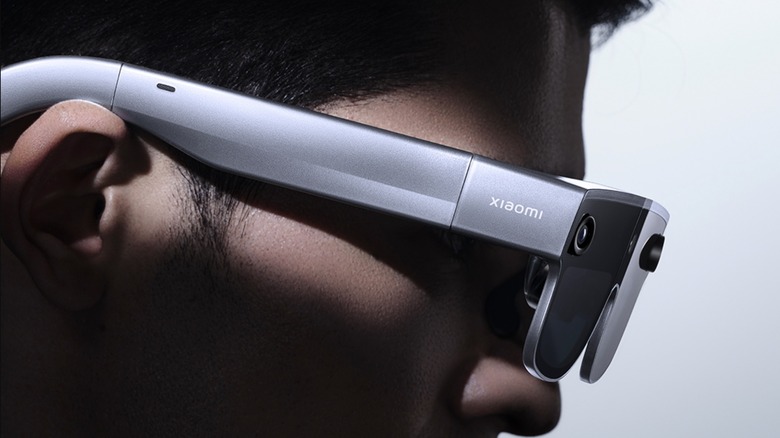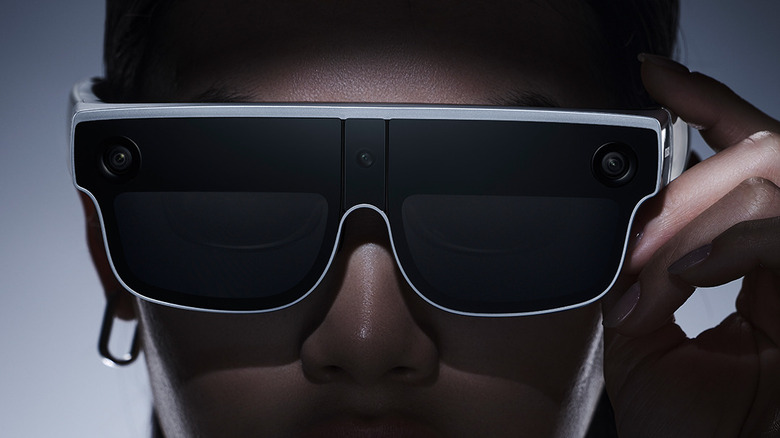Xiaomi's Wireless AR Glasses Concept Boasts Gesture Controls For The Real World
It's been a hectic MWC for Chinese consumer electronics and smartphones major Xiaomi, which announced a bunch of new devices at the event. While most of the limelight was on the company's 2022 flagship lineup — the Xiaomi 13 Pro, Xiaomi 13, and the Xiaomi 13 Lite — the company also used the occasion to take covers off the Xiaomi Buds 4 Pro, Xiaomi Watch S1 Pro, and the Xiaomi Electric Scooter 4.
One day after announcing these products, Xiaomi, on February 27, 2023, showcased its newest attempt at making its first wireless AR Glasses. The company calls the device the Xiaomi Wireless AR Glass Discovery Edition. While Xiaomi has showcased Smart Glasses concepts in the past, the latest iteration of the concept features several generational improvements over its predecessor.
Xiaomi's previous attempts in this space include the Xiaomi Smart Glasses (showcased in September 2021) and the Mijia Smart glasses (launched in August 2022 as a China exclusive). The Mijia Smart Glasses were notable for being the first smart glasses product from Xiaomi to reach the public. It featured an OLED display and twin cameras (50MP main and 8MP telephoto) and was reasonably priced at 2499 Yuan ($350).
Xiaomi claims its new AR Glasses concept is the company's first wireless AR glasses to utilize distributed computing. This essentially means that the product does not require a wired connection to a host computing device for data transfer. Instead, Xiaomi uses a proprietary wireless interconnection standard to communicate with a compatible smartphone. The wireless design also aids in weight reduction, and the product weighs just 126g — making it lighter than an average smartphone.
Everything to know about the Xiaomi Wireless AR Glass Discovery Edition
The Xiaomi Wireless AR Glasses boast what Xiaomi claims to be a "retina level" display boasting a PPD (pixels per degree) value of 58 — quite close to the critical value needed for the human eye to not distinguish between individual pixels. The optical module claims a brightness of 1200 nits and also features electrochromic lenses that adjust to various lighting conditions. Aside from the AR mode that lets the wearer interact with real-world objects, the glasses can also turn themselves into a VR headset thanks to an inbuilt Blackout Mode.
Xiaomi Wireless AR Glass Discovery Edition features a lightweight yet sturdy design with a magnesium-lithium alloy structure and carbon fiber materials. Its electrochromic lenses allow for seamless access to reality and the virtual world at a single click. pic.twitter.com/FWANebc4Gp
— Lei Jun (@leijun) February 27, 2023
Besides supporting a variety of AR gestures, the Xiaomi Wireless AR Glasses also support popular applications like YouTube and TikTok via Xiaomi's Mi Share streaming app, turning itself into a large portable screen. The glasses also let users place installed apps anywhere within the viewing space. Other real-world applications made possible by the product include the ability to "grab" content being played back on a TV and continue watching the same on the Glasses. Another use case is controlling a smart lamp by simply looking at it using virtual buttons activated by spatial gestures.
Unlike the Mijia Smart Glasses, Xiaomi has already indicated that it has no immediate plans to bring the Wireless AR Glass Discovery Edition to the general public. This is probably because the product isn't ready for primetime yet and requires further refinement.

